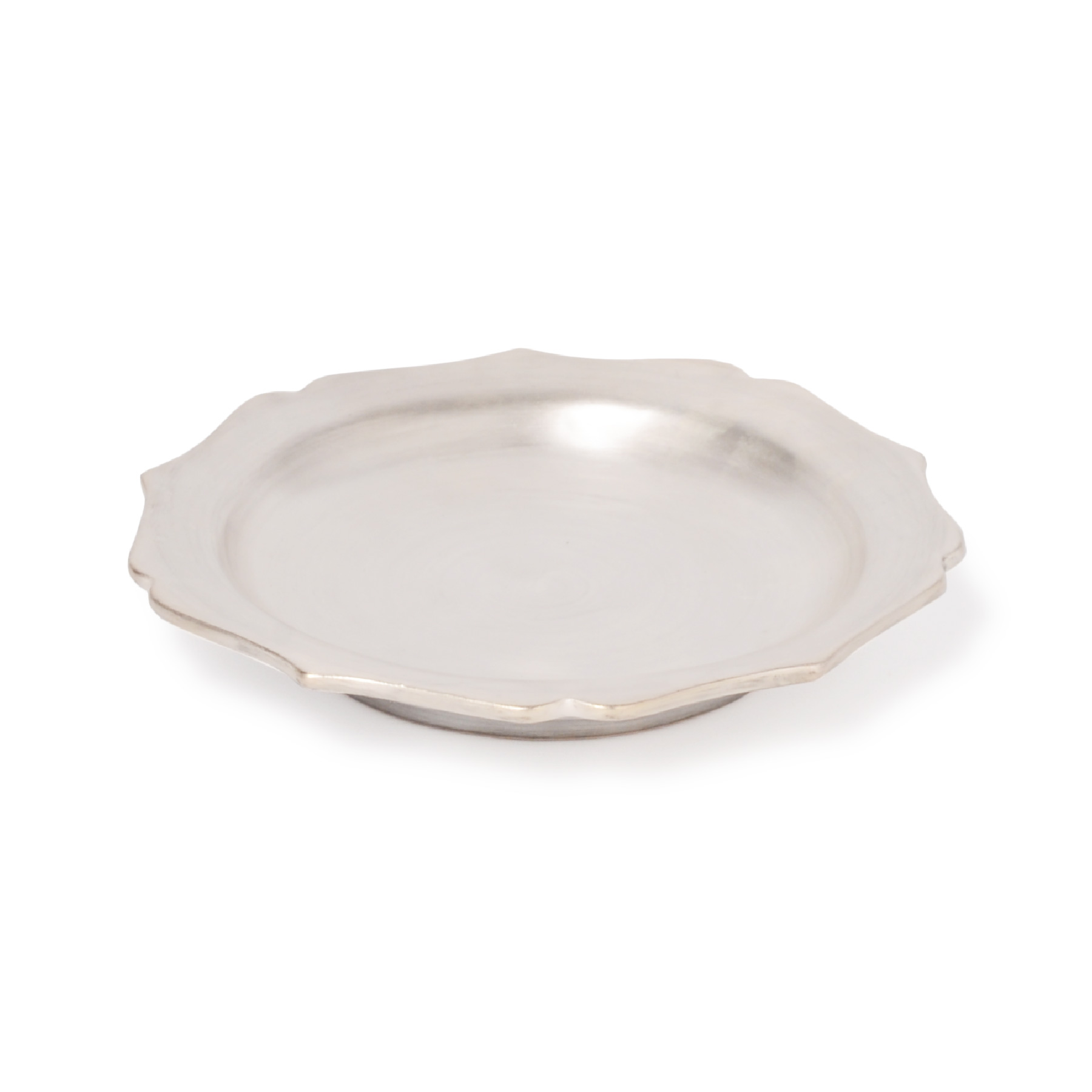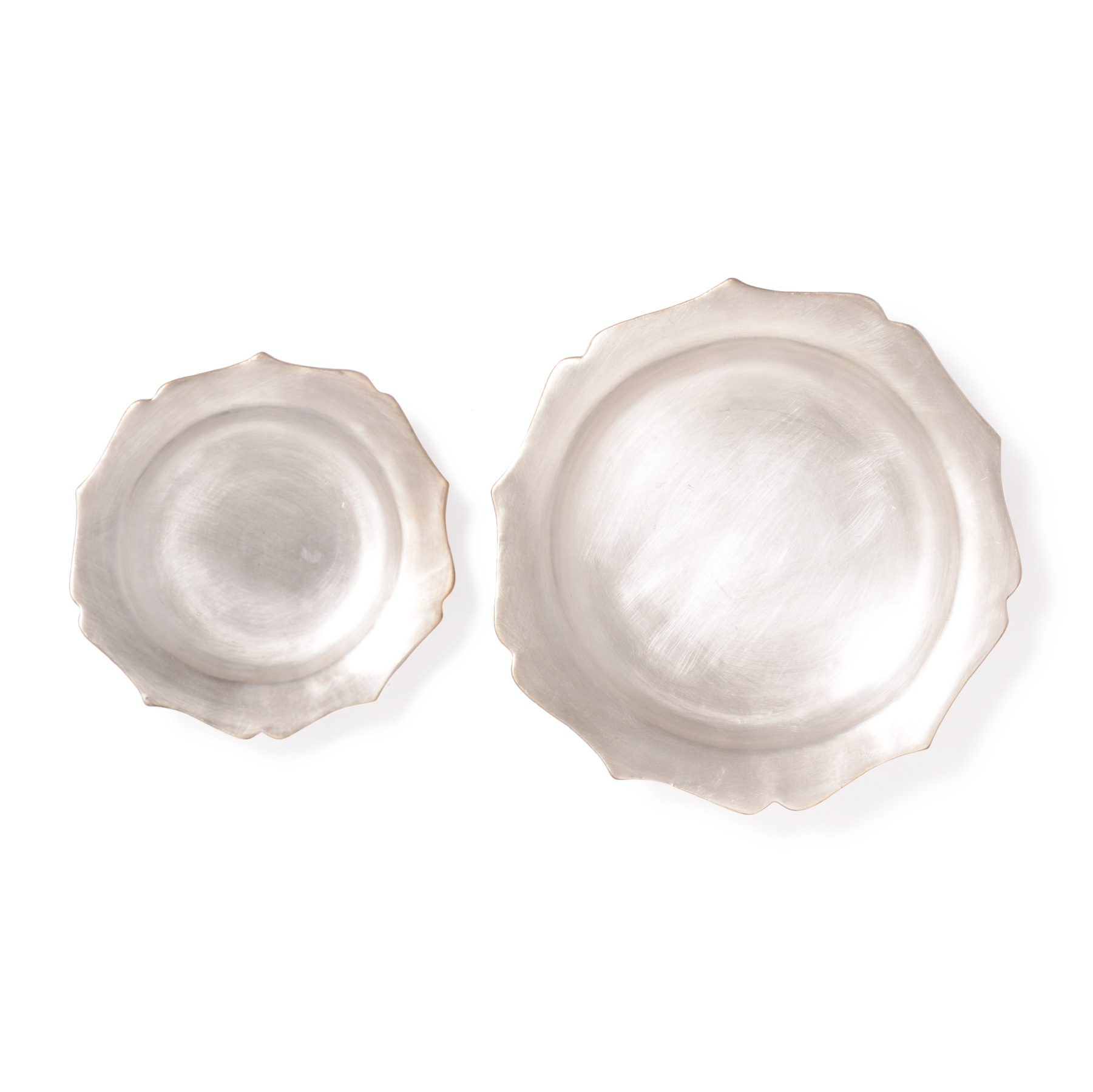Jolie 6sun plate silver
Description
"Jolie" Plate is based on the traditional "Ryoka" shape: the rim of round plates consists of many notches representing petals whose tips are pointed. Combinations of the petals, rim and irregularly shaped foot will produce softness somehow. Serve ordinary food with care in "Jolie" flower-shaped plate, and elegant vibes will be given to the table. Made by clay slab building, "Ryoka" shape's elegance merges into handmade warmth. Usable both for the ordinary table and entertaining the guests. [19 flower-shaped plate] is great for serving broiled fish or the other main dishes. Its moderate size will be ideally suited for presenting Japanese style meal set.
Features
Color Shade Variations
Each piece has individual color shade variations. Affected by glazes and natural firing conditions such as changes in temperature, humidity and other climate elements and also how to receive the fire in the kiln chamber, each piece has own expression. It is really difficult to make the completed ware exactly same in color by firing and glazing even when the same materials are used. 100 pieces show 100 kinds of expressions, as it were.
Color Irregularities
There are color irregularities of applying a glaze or slip, which are different from part to part in a piece of ware. For example, some parts are glazed thinly or thickly depending on the shape of the ware. That leads to part-to-part subtle differences in appearance of the clay in a piece of ware.
Glaze or Slip Drips
The glaze or slip may look like dripping. There is unevenness of a glaze or slip when they are applied to ware by hand. There also appear glaze drips or slip drips, which are caused by the glaze or slip flows during firing.
Pinholes
Pinholes may be seen clearly on the surface. Pottery (earthenware) is mainly made from earth, and green ware contains a lot of air while biscuit firing. While glazed firing, this air inside the biscuit ware becomes air bubbles, which remain and look like small holes on the surface of the glazed part. Those small holes are called pinholes.
Crazing (Chaps)
Crazing (having chaps) may appear clearly on the glazed part. The “direct” crazing means having chaps originally. The “aging” crazing means having chaps over time as you use the tableware item. There is a difference between the shrinkage rate of the glaze and that of the clay, so crazing occurs. Note that those cracks do not come from the damage of tableware items. They might appear just before use, but it is no problem in terms of use. They appear on the surface of pottery (earthenware) and semi-porcelain.
Do Not Microwave
Not Oven Safe
Not Dishwasher Safe
made in JAPAN
食器を洗う際は、やわらかいスポンジをご使用ください。銀彩は手作業で塗られておりますので、多少のムラが出ます。銀彩部分は酸性の食器に触れると変色します。元には戻りませんのでご注意ください。また、空気に触れますと徐々に硫化して黒ずみます。黒ずみを取り除く方法や取り扱い方法は商品に添付してますQRコードよりご覧いただけます。










